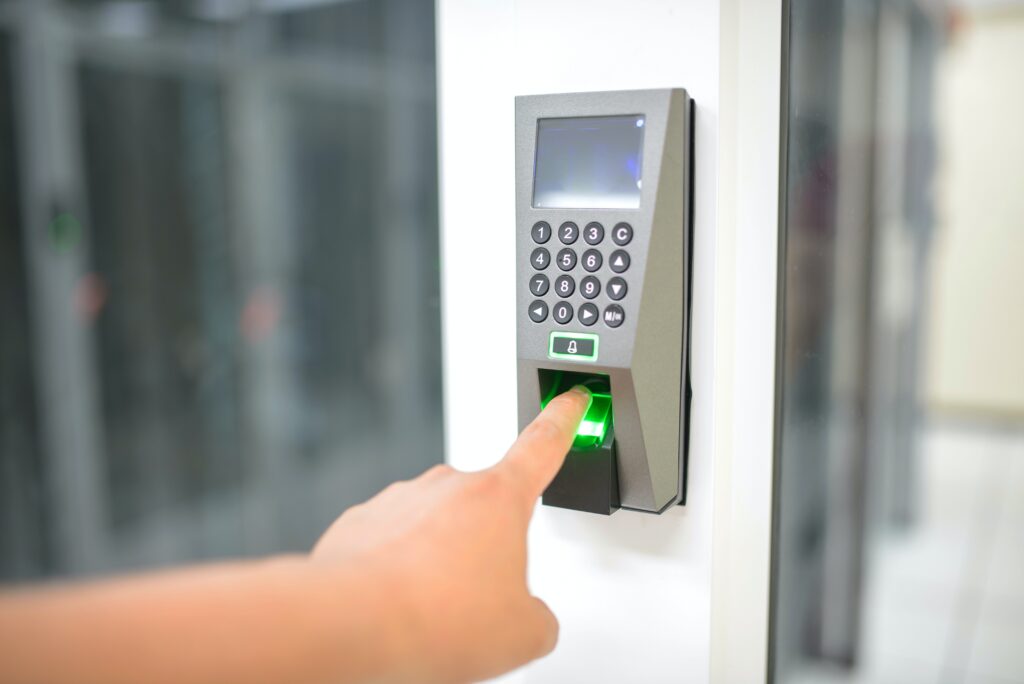The world of IT cybersecurity is always evolving, and it truly feels like things are constantly changing. Recently a new buzzword has been making waves and stirring conversations across industries: Zero Trust. It might sound like a cryptic incantation from a sci-fi movie or a mysterious secret society’s doctrine, but fear not – the concept of Zero Trust is far from mysterious once you unravel its layers. Picture a world where trust is not assumed, but rather earned at every turn, where your organization’s security posture isn’t a static stance but a dynamic dance of protection. That is the concept of Zero Trust. In this blog we will demystify this concept by breaking it down into its fundamental elements using simple, relatable terms.

An Introduction to Zero-Trust
Picture this: In a traditional security approach, you might think of a medieval castle with towering walls and a moat, where access is granted to those who possess the right credentials – very much like a gated entrance to an exclusive club. This “castle and moat” mentality has been the cornerstone of IT cybersecurity for decades, with a strong emphasis on defending the perimeter and keeping adversaries at bay. But in today’s interconnected digital landscape, where data flows freely across devices, networks, and clouds, the once-fortified walls have become more porous, making the castle analogy less relevant.
Enter Zero Trust. Now imagine a world where every individual trying to access your digital kingdom is met with scrutiny, regardless of whether they’re within the castle walls or beyond. Zero Trust is a revolutionary approach that flips the traditional security stance on its head, advocating for a “never trust, always verify” mindset. It’s not about assuming that those within are friendly and those outside are hostile; it’s about continuously verifying the identity and intentions of every entity, be it a user, device, application, or even a seemingly innocuous piece of data.
At its core, Zero Trust is a philosophy that embraces skepticism and vigilance in the face of today’s complex threat landscape. It’s about building layers of security that work in harmony, dynamically adjusting to the context and risk associated with each interaction. Think of it as a series of checkpoints where every entity has to prove its trustworthiness before being granted access, like showing a boarding pass and identification at airport security before getting on a plane.
We’ll examine the key components that make up this concept – from identity and access management to continuous monitoring and adaptive controls. By the end, you’ll not only have a clearer understanding of what Zero Trust entails but also a newfound appreciation for its role in reshaping the landscape of modern cybersecurity and enhancing your organization’s overall security.

What is Zero Trust Anyway?
Zero Trust is a cybersecurity approach that operates on the principle of not automatically trusting anything, both inside and outside a network. In simple terms, it means treating every user, device, or application as potentially untrusted, regardless of their location or previous access privileges. Instead of relying on a traditional “trust but verify” model, Zero Trust requires constant verification and authentication before granting access to resources. By adopting this stance, organizations can significantly bolster their posture towards security by minimizing the potential attack surface and reducing the impact of security breaches.
How did the concept of zero trust come about?
The concept of Zero Trust originated as a response to the evolving cybersecurity landscape and the recognition that traditional security models were becoming increasingly inadequate to protect against sophisticated cyber threats. The idea was popularized by John Kindervag, a former Forrester Research analyst, who introduced the term “Zero Trust” in 2010.
The inspiration for Zero Trust came from several factors:
Perimeter-Based Security Limitations
Traditional security models relied heavily on securing the network perimeter, assuming that internal devices and users were inherently trusted once they gained access. However, the rise of cloud computing, mobile devices, and remote work shattered the concept of a well-defined network perimeter, making it easier for attackers to breach defenses and move laterally within networks.
Sophistication of Cyber Threats
Cyberattacks were becoming more sophisticated, and attackers were finding ways to bypass perimeter defenses using techniques like phishing, social engineering, and exploiting vulnerabilities in software.
High-Profile Breaches
Several high-profile security breaches demonstrated that attackers could bypass perimeter security and gain access to sensitive data even after breaching the outer defenses.
In response to these challenges, Zero Trust emerged as a new cybersecurity paradigm that challenged the assumption of trust and advocated for a more proactive and layered security approach. The idea was to shift from a “trust but verify” model to a “never trust, always verify” model, where every user, device, and application would be treated as potentially untrusted, regardless of their location.
Zero Trust emphasizes continuous verification, strict access controls, micro-segmentation, least privilege access, encryption, and continuous monitoring. It focuses on protecting data and resources wherever they are, whether in the cloud, on-premises, or accessed remotely. The approach aims to provide a stronger defense against cyber threats by minimizing the potential attack surface and reducing the impact of breaches.
Over time, Zero Trust has gained traction in the cybersecurity industry, and many organizations have adopted its principles to enhance their security posture in the face of ever-evolving cyber threats.

How does Zero Trust work?
Zero Trust embodies an IT security strategy that revolves around the principle of not automatically trusting any user, device, or application, regardless of their origin or prior access privileges. Instead of relying on a default stance of trust, this approach demands continuous verification and authentication before granting access to resources. At its core, Zero Trust hinges on the concept of “least privilege access,” providing users and devices with only the bare minimum permissions they need to operate.
The network is segmented into smaller units to confine potential breaches, and strict controls are placed on communication between these segments. Robust identity verification, such as multi-factor authentication and biometrics, ensures that only authorized entities gain entry.
Vigilant watch is upheld through ongoing monitoring. Continuous monitoring scrutinizes network activity and user behavior, promptly identifying suspicious patterns. Access control policies, influenced by roles, device health, and location, are fluid and adapt in real time.
Encryption safeguards data in transit and at rest, rendering intercepted information indecipherable to prying eyes. Automated processes aid in policy enforcement and threat response.
Ultimately, Zero Trust’s dynamic framework emphasizes constant scrutiny, strict access parameters, and a proactive security stance to minimize risk and fortify digital environments against cyber threats.
What is the Zero Trust Approach?
Zero Trust is a transformative security framework that fundamentally challenges and reshapes traditional IT security approaches. Unlike conventional methods that grant automatic trust within a network’s protective perimeter, Zero Trust enforces constant scrutiny and rigorous verification for every entity trying to access digital resources.
This framework operates on the principle that trust is never assumed based on an entity’s location, whether physical or virtual. It mandates continuous and meticulous validation for all users, devices, and applications seeking access. Key elements of Zero Trust include stringent identity verification, the principle of least privilege that limits access rights to the bare minimum needed for tasks, and relentless monitoring for any unusual activity.
Network segmentation restricts potential breaches to isolated areas, enhancing overall security. Access control policies are dynamic, adjusting to factors like user roles, device health, and geographic location. Additionally, encryption protects data both in transit and at rest, while automation supports policy enforcement, anomaly detection, and quick responses to threats.
By adopting Zero Trust, organizations shift from a reactive to a proactive security stance, reducing attack surfaces, containing breaches, and addressing vulnerabilities effectively. This approach transforms the foundation of trust from a presumed entitlement to a rigorously earned privilege, bolstering cybersecurity in the face of evolving threats.

What are the goals of Zero Trust?
The goals of the Zero Trust cybersecurity approach revolve around enhancing overall security and minimizing risks within an organization’s digital environment. These goals include:
Reduced Attack Surface
Zero Trust aims to limit the potential attack surface by treating every user, device, and application as potentially untrusted. This reduces the avenues through which attackers can gain unauthorized access to sensitive resources.
Minimized Lateral Movement
By segmenting the network and implementing strict controls on communication between segments, Zero Trust prevents attackers from easily moving laterally within the network in case of a breach. This containment reduces the scope of potential damage.
Stronger Identity Verification
Zero Trust emphasizes robust identity verification methods, such as multi-factor authentication and biometrics, to ensure that only authorized entities gain access. This helps prevent unauthorized users from exploiting weak or stolen credentials.
Continuous Monitoring and Detection
The approach promotes continuous monitoring of network activity and user behavior, enabling the detection of anomalies and potential threats in real time. This proactive stance helps identify and address security incidents promptly.
Least Privilege Access
Zero Trust enforces the principle of least privilege, providing users and devices with only the minimum access privileges required to perform their tasks. This limits the potential impact of a breach and prevents unauthorized access to sensitive resources.
Adaptive Access Control
Access control policies in a Zero Trust environment are dynamic and adaptable, based on factors like user roles, device health, location, and other contextual information. This ensures that access is granted or denied based on the most current conditions.
Data Protection
Encryption is a fundamental component of Zero Trust, ensuring that data remains unreadable even if intercepted. This safeguards sensitive information from being exposed during transmission or while at rest.
Rapid Threat Response
Automation and orchestration play a role in Zero Trust by automating security processes and enabling quick responses to emerging threats. This reduces the time it takes to mitigate and recover from security incidents.
Proactive Security Stance
Zero Trust shifts the focus from a reactive security model to a proactive one, where continuous verification, monitoring, and adjustments to access control policies help prevent breaches before they occur.
Business Continuity
By minimizing the impact of security breaches and reducing the risk of successful cyberattacks, Zero Trust contributes to maintaining business operations and ensuring the continuity of critical services.
In summary, the goals of the Zero Trust approach encompass a comprehensive strategy to strengthen cybersecurity, protect sensitive information, and create a more resilient and secure digital environment for organizations.

How do you implement zero trust?
I’ll give you the layman’s term answer first:
Firstly, identify and understand the critical assets that need protection, such as confidential data and essential programs.
Then there’s the aspect of “Proving It’s You.” This involves implementing authentication measures where individuals attempting access must demonstrate their true identity, similar to using a unique fingerprint and a confidential code.
Next there is the concept of “Staying in Your Room”, which emphasizes compartmentalization within the security framework. Just like a fortress with various rooms, individuals are restricted to specific areas, preventing unauthorized access, and limiting the potential for widespread issues.
A vigilant approach, where security guards or monitoring systems continuously observe activities, would be the next step. Any anomalies trigger alarms, prompting swift corrective actions.
You would also have to lock up all your secrets by encrypting critical information to safeguard it from unauthorized interception. Even if someone attempts to eavesdrop, the encrypted nature of the data ensures they cannot comprehend its contents.
You will continuously want to keep things updated. It is vital to regularly update the security infrastructure. This proactive measure ensures resilience against emerging threats and evolving tactics employed by malicious actors.
Lastly, a collective effort is essential, as in “Everyone Helps.” In an organization, everyone plays a role in fortifying the security posture, contributing to a united front against potential threats. This collaborative approach strengthens the overall resilience of the security framework.

Now let’s consider the technical answer:
Implementing a Zero Trust cybersecurity approach involves a combination of technology, processes, and organizational culture shifts.
- Identifying Assets: Begin by determining the critical data, applications, and resources essential to your organization. Evaluating Current State: Assess existing security measures, network architecture, and access controls to identify gaps and vulnerabilities. Risk Assessment: Identify potential risks and threats faced by your organization.
- Identity and Access Management (IAM): Implement multi-factor authentication (MFA) and other robust authentication methods for users and devices. Define access based on user roles, responsibilities, and the principle of least privilege.
- Network Segmentation and Micro-Segmentation: Divide the network into smaller segments to restrict lateral movement of attackers. Implement controls to regulate communication between segments and enforce strict access rules.
- Continuous Monitoring and Detection/Behavioral Analytics: Utilize machine learning and behavioral analysis to detect anomalies and unusual user behavior. Set up alerts for suspicious activities and potential security breaches.
- Access Control Policies: Develop access control policies considering contextual factors like user roles, device health, location, and time. Use automation to enforce access policies and make real-time access decisions.
- Data Encryption: Encrypt data both in transit and at rest to prevent unauthorized access or interception.
- Continuous Risk Assessment and Remediation: Regularly assess device and user risks and promptly address vulnerabilities and security gaps. Patch Management: Keep software and systems up to date to mitigate known vulnerabilities.
- Automate Processes: Automate security tasks such as access provisioning and threat response to ensure consistency and efficiency.
- Employee Training and Awareness: Train employees on security best practices, social engineering awareness, and the importance of adhering to security policies.
- Change Management and Culture Shift: Gain support from leadership and ensure all teams understand and embrace Zero Trust principles. Foster collaboration between IT, security, and other departments to ensure seamless implementation.
- Vendor and Third-Party Management: Extend Zero Trust principles to external partners and vendors who access your systems and data.
- Continuous Improvement: Zero Trust is an ongoing process. Continuously monitor, assess, and update security measures to address emerging threats and challenges.
Implementing Zero Trust requires careful planning, collaboration across departments, technology investments, and a commitment to a more proactive and adaptive approach to cybersecurity. It’s a comprehensive effort aimed at creating a resilient and secure digital environment for your organization’s assets and data.

Elevate Your Security Posture with Professional Computer Concepts: Your Trusted Partner in Zero Trust and Beyond
At Professional Computer Concepts, our journey through the intricate landscape of IT security has led us to a profound understanding of cutting-edge concepts such as Zero Trust. With a wealth of experience under our belt, we have honed our expertise in not only the nuances of Zero Trust but also an array of other pivotal IT security paradigms. We pride ourselves on being at the forefront of safeguarding digital landscapes through comprehensive strategies and state-of-the-art solutions. If you’re ready to elevate your organization’s security stance and delve into the realm of proactive protection, look no further. Contact us today for a transformative partnership that will fortify your defenses and pave the way for a secure digital future. Your security journey begins with us.

